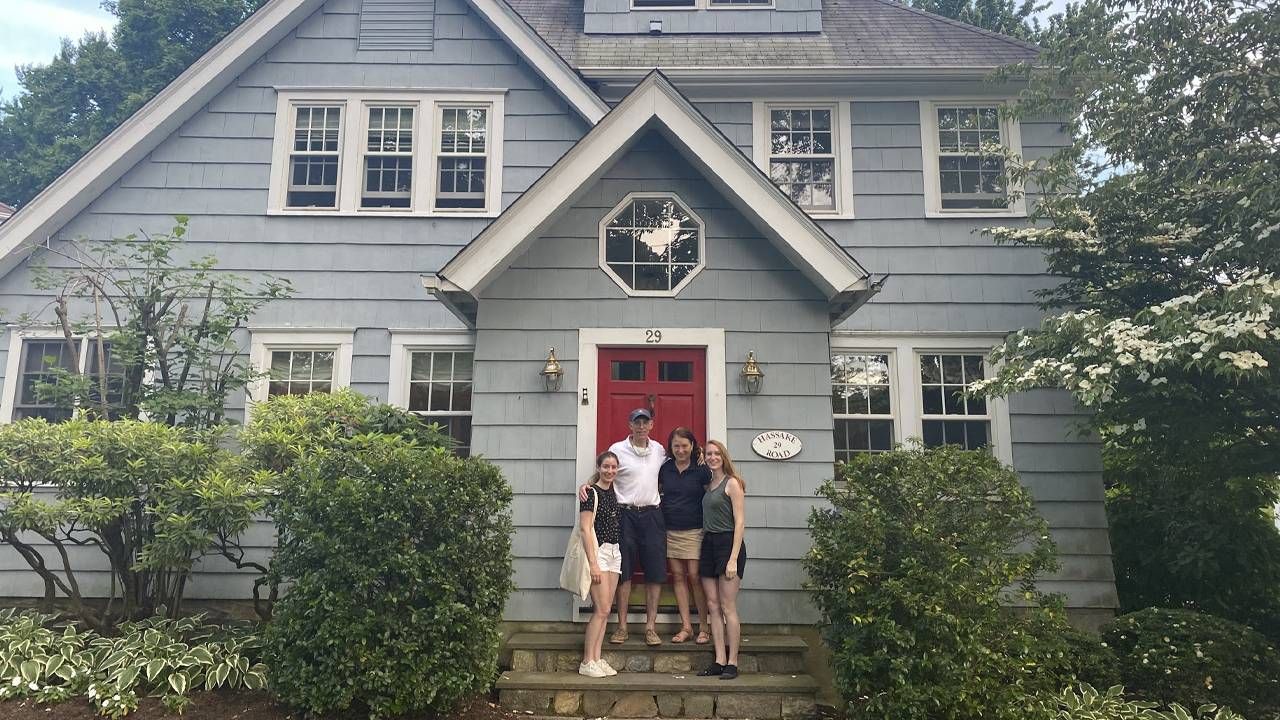7 Tips for Rightsizing or Downsizing During the Pandemic
Advice from one of our bloggers who's in the middle of her move
I always knew that someday we'd sell our "forever" home. The Connecticut house my husband and I have lived in for 28 years has three flights of stairs and isn't well-suited for aging. And with our children now launched, we no longer need the space we once did. So, after the pandemic hit and the demand for houses in suburbia like ours soared, my husband and I agreed it was the right time to move.

The good news: Our house sold in less than a week.
The bad news: We didn't have a clue where to go next.
Rightsizing vs. Downsizing
Ultimately, after doing some essential research about "rightsizing," we settled on Bucks County, Pa., a charming area just north of Philadelphia and two hours from our Connecticut home. For now, our plan is to rent while we explore and decide on next steps.
Moving is rarely simple, and the pandemic is certainly complicating the process. So, since you or someone you know may be thinking of making a similar move, I thought I'd share seven tips from our experience:
1. Decide if you want to downsize — or rightsize. Like many relocating near-retirees, we assumed we would downsize in our move. But once we started looking at homes, we realized we actually wanted more space than we first thought.
We eventually came up with one combined list of "nice to haves" and "must haves."
A little less space is good, but our real goal was to rightsize to a more age-friendly layout with fewer stairs, less maintenance and a master bedroom on the ground floor. Knowing this helped us narrow down where we'd look for our next home.
2. Develop a list of "nice to haves" and "must haves." To quickly narrow down our list of relocation target areas, we needed to clarify our wants and needs: What type of climate did we want? Did we want to live in an urban, rural or suburban place? How important was having easy access to public transportation, good health care and cultural venues?
Fortunately, my husband and I agreed on most things, but like most couples, we also had our differences. So, knowing that each of us would have to compromise a little, we agreed to write down our individual lists and then compare our findings. After a few lively discussions, we eventually came up with one combined list of "nice to haves" and "must haves" that helped guide our search.
Ultimately, we decided, we'd live in a suburban area in the Northeast.
3. Research the tax implications of your move. Like many near-retirees, we hoped to lower our cost of living by relocating to somewhere less expensive. Although none of the states on our target list (New York, New Jersey, Pennsylvania and Connecticut) are noted for their affordability, we discovered that Pennsylvania exempts all income from Social Security, as well as payments from retirement accounts like 401(k)s (it does have a hefty inheritance tax, but we're hoping not to worry about that for a while).
After using the helpful "What Are The Best States to Retire for Taxes?" free online calculator from Smartasset.com, a financial technology company, we were surprised by how much we'd save in taxes in Pennsylvania, compared to neighboring states. Hello, Keystone State!
Of course, retirement taxes are just one piece of your financial analysis. So be sure to factor in other expenses like home prices and estate taxes when doing your cost-of-living comparison.
4. Tap your extended network for advice. Once we narrowed our search to Bucks County, we realized we only knew a few people who lived there. Thankfully, our friends were quick to introduce us to their friends in the area.
Through those conversations, we gained new insights, recommendations and referrals that helped us narrow our search down to a few neighborhoods.
5. Start your purging early, and do a little at a time. Under the best of circumstances, cleaning out your forever home is a challenging chore. But during the pandemic, many of the places that normally take donations are either closed or operating with restrictions.
It took a consistent effort, but bit by bit, we whittled our belongings down to the essentials.
So, prepare to spend more time on this task than usual. And don't expect to be able to sell much of anything.
We donated the bulk of our items through Goodwill and by listing some on NextDoor.com, a site that connects neighbors to each other.
We also approached people directly: A local charity had a client in need of a bed. The couple buying our home decided to take some of our furniture. And a neighbor who sews face masks was delighted to receive our curtains.
It took a consistent effort, but bit by bit, we whittled our belongings down to the essentials.
6. If you'll be looking for a place to rent, prepare for a challenge. At first, we thought, renting sounded like a great idea. It would give us flexibility (the ability to move again fairly seamlessly) and an opportunity to try out a new type of living arrangement.
We imagined finding a cute cottage on the river or a carriage house on a horse farm. Sadly, our vision did not square up with reality. We ended up with a townhouse in a 55+ community.
That's because the pandemic has created a shortage of rentals in many suburbs, especially in the Northeast. Consequently, rents have soared and the best rentals often get scooped up almost as soon as they are listed.
If you plan to rent, I recommend setting up alerts on sites like Realtor.com and Trulia.com, so you'll know when a potential place becomes available. Also, prepare to spend a lot of time looking. Then, pounce when you find something you like.
7. Finally, trust in the process. If the pandemic has taught us all anything, it's that life is full of surprises. When we started this relocation process, Bucks County wasn't even on our radar screen. But as with other major life transitions, each step of the journey yielded new information, advice and insights. After talking with people, crunching the numbers and visiting the area several times, we were sold.


